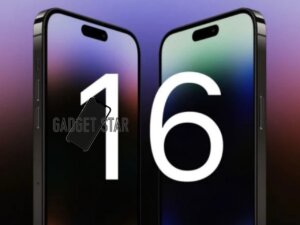Apple’s iPhone series typically generates huge excitement, but reports indicate the latest iPhone 16 release may be off to a slower start in the United States. This trend contrasts with the overwhelming demand for previous models and has raised questions about what factors might be contributing to this shift. Whether due to economic challenges, consumer fatigue, or shifts in the smartphone market, Apple’s latest device faces unique obstacles.
This article dives deep into the causes behind the sluggish sales of the iPhone 16, its potential impact on Apple, and what it all means for the U.S. smartphone landscape.

1. The IPhone 16: Expectations vs. Reality
When Apple launched the iPhone 16, it introduced some anticipated features, including advanced camera capabilities, an upgraded processor, and improved battery life. Despite these upgrades, initial sales numbers have shown that the reception isn’t as robust as previous releases. One reason could be Apple’s incremental design updates, which may not have offered enough new features to incentivize users of recent iPhones to upgrade.
2. Economic Considerations and Consumer Fatigue
Another factor impacting sales is the current economic landscape. Rising inflation and higher living costs may be causing consumers to tighten their spending. A new iPhone is a significant investment, and when faced with tough economic choices, some may decide to wait. Furthermore, Apple has gradually increased iPhone prices over recent years, making each upgrade a more substantial financial commitment.
3. Longer Upgrade Cycles
As the smartphone market matures, consumers are holding onto their devices longer. The iPhone 16 may be suffering from this trend, as users are finding little reason to replace their iPhone 14 or 15 models if they’re still functioning well. Smartphones have become so advanced that even older models can handle most users’ needs without major sacrifices in performance or experience.
Also Read: iPhone Prices in the USA: Your Ultimate Guide to Costs, Models, and Deals
4. Competition from Other Smartphone Brands
While Apple dominates the U.S. market, Samsung, Google, and other Android manufacturers have been making significant gains by introducing innovative features, competitive pricing, and flexible financing options. Samsung’s Galaxy S23 series and Google’s Pixel 8 Pro, for example, offer high-quality alternatives with powerful cameras and software experiences, often at lower price points. For cost-conscious consumers, this can be a compelling reason to skip the latest iPhone release.
5. Environmental Considerations and Sustainability
Apple has been a leader in sustainability, and while this resonates with many, it also means that its customers may feel more justified in extending the life of their current devices. The push for environmentally friendly practices, like reduced e-waste, encourages users to think twice before upgrading their phones frequently.
6. Features and Innovations: Enough to Drive Sales?
Some industry experts suggest that Apple’s recent product launches have lacked game-changing features. While the iPhone 16 offers incremental improvements, it may not have provided enough “wow” factor. Features like better AI-enhanced photos, improved gaming performance, and minor battery efficiency gains are beneficial but may not be significant enough for many users to justify upgrading from an iPhone 15 or iPhone 14.
7. The Impact on Apple’s Financials
If the trend continues, slower iPhone 16 sales could impact Apple’s quarterly earnings. The iPhone represents a substantial part of Apple’s revenue, and a dip in sales could cause shifts in how investors view the brand’s growth potential. To mitigate these impacts, Apple might increase its focus on service revenue, offering more paid services and subscriptions to its user base.
8. What This Means for the Smartphone Market
The U.S. smartphone market is witnessing an interesting period of evolution. Apple’s shift to prioritize sustainable products might drive competitors to adopt similar policies, pushing consumers to think more critically about upgrading devices.
9. How Apple Could Revitalize the iPhone 16’s Appeal
If Apple wants to turn things around for the iPhone 16, it could consider a few strategies:
- Enhanced Trade-in Offers: Apple could incentivize upgrades by offering generous trade-in values for older iPhones, making the switch to the iPhone 16 more financially accessible.
- Exclusive Software Features: Apple could introduce unique software functionalities exclusive to the iPhone 16 to boost demand.
- Targeted Marketing Campaigns: Tailored marketing highlighting specific new features could encourage sales among niche groups, like photographers or mobile gamers.
Conclusion
While the iPhone 16’s slow start may seem concerning for Apple, it’s a reflection of broader trends: an uncertain economy, more discerning consumers, and a matured smartphone market. For Apple, the challenge is to adapt to these shifts without compromising on quality or user experience.

Your article helped me a lot, is there any more related content? Thanks! https://accounts.binance.com/kz/register-person?ref=K8NFKJBQ